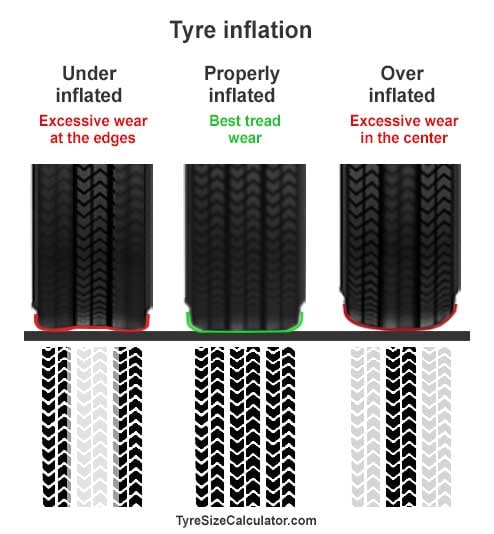Optimisation is key to the transportation industry. From a logistics perspective, trucks should never roll unladen. The bigger truck fill rate, the better. New technologies and driving techniques are developed with the aim of reducing fuel consumption which is good both for the business economy and the environment. Looking at such major factors as fill rate and fuel consumption, is there reason to consider optimisation of such a tiny thing as tyre pressure? Yes, there is!
Tyre pressure vs. cost
Unfortunately, many drivers don’t bother too much about tyre pressure. A quick check from time to time seems to be enough for them. This may prove to be a mistake because air pressure is interrelated to the economy. If the tyres are not correctly inflated, they will wear much faster and need to be replaced. The cost of tyres could be quite substantial and unnecessary wear will reduce the life of the tyres and increase the cost accordingly.
Tyre pressure vs. safety
The friction in the small footprint of the tyre is what is keeping the truck on the road when accelerating, braking and turning. There is a common view that the bigger this footprint, the more friction – and the more safety. Accordingly, many drivers think it is better – and safer – with an under-inflated tyre as there is more rubber to the road surface. Although it may appear logic, this is a misconception.
Tyres are constructed for optimal performance at a specific pressure. At this pressure, you have the optimal balance between friction and wear. When under-inflated, the increased friction and increased sidewall flexing will generate excessive internal heat in the tyre, and it will deteriorate – and safety will actually decrease.
On the other hand, an overinflated tyre will have a smaller footprint, i.e. less friction and the tyre centre will wear quicker.
Obviously, you should always strive for correct air pressure. However, a few PSI over-inflated is better than an under-inflated tyre.

Which is the correct tyre pressure?
To optimise the tyre pressure in a full vehicle combination will require different pressure in different tyres depending on vehicle load and whether they are steering wheels, drive wheels or trailer wheels. The recommended pressure for a specific tyre is found in the manufacturer’s documentation and air pressure tables.
Optimising tyre pressure takes some effort and consideration. But, in the long run, it pays off.
Are there any exemptions?
Yes. No matter how tyre manufacturers improve their products, there will always be situations when circumstances put out the rules. For example, on icy roads when tyres loose grip air pressure will be of no help. This is where snow chains come in handy.
The wise driver will always optimise tyre pressure and be prepared for winter with automatic snow chains. This way you will optimise both tyre wear and safety.


